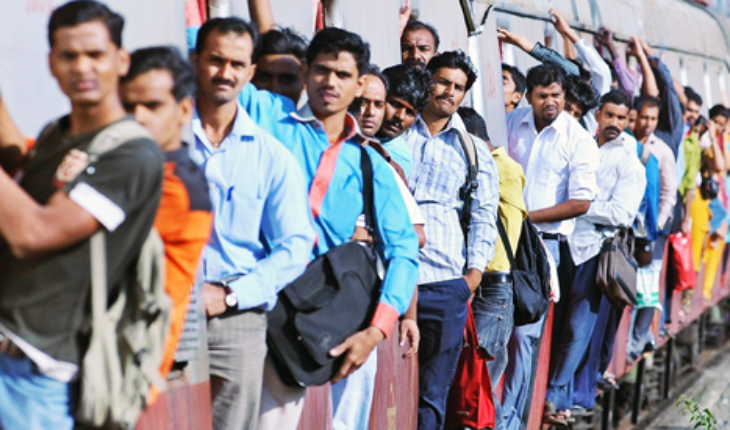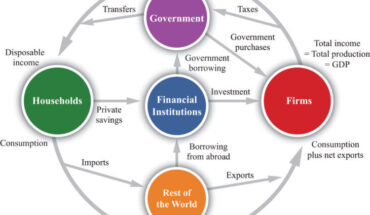
The world is rapidly ageing, but India is still young. In the next few decades, India will be a talent powerhouse and the largest contributor to the global workforce. According to a CII report, if India’s demographic dividend is productively employed, growth prospects will brighten, helping it to jump its GDP from the current $3 trillion to $9 trillion by 2030 and $40 trillion by 2047. India is projected to surpass China as the world’s most populous country in 2023. The report of The Confederation of Indian Industry (CII) warns, that If India does not create enough jobs and its workers are not adequately prepared for those jobs, its demographic dividend may turn into a liability. education and skill development will be the biggest stimulants for reaping this dividend.
The report points out that India will add another 183 million people to the working age group of 15-64 years between 2020-50 as per the UN Population Statistics database. Thus, a huge 22 per cent of the incremental global workforce over the next three decades will come from India.
Although investment, reforms and infrastructure are likely drivers of India’s economic growth, no growth driver is as certain as the availability of people in India’s working age group. According to Chandrajit Banerjee, Director General, CII” India’s young population, its demographic dividend, gives India the potential to become a global production hub as well as a large consumer of goods and services”.
The period of 2020-50 provides India with a short window of opportunity to harness its demographic dividend.However, India does not have much time to utilise this dividend.
The report said that high quality school education, relevant higher education and skill development aligned to industry needs are some of the pre-requisites, if India is to become an economic powerhouse which not only creates good quality jobs for its youth, but also services the rest of the world.
The report analyses India’s labour market imbalances, and highlights how the skill mismatch and shortage can impact productivity growth, which is critical for India to enhance its long-term growth. In 2019-20, only 73 million of India’s 542 million strong workforce received any form of vocational training (whether formal or informal).To put it in global context, the proportion of formally skilled workers as a percentage of total workforce stands at 24 per cent in China, 52 per cent in USA, 68 per cent in UK and 80 per cent in Japan, against a paltry 3 per cent in India, the report stated. In 2019-20, only 73 million of India’s 542 million strong workforce received any form of vocational training (whether formal or informal).To put it in global context, the proportion of formally skilled workers as a percentage of total workforce stands at 24% in China, 52% in USA, 68% in UK and 80% in Japan, against a paltry 3% in India.To overcome such challenges, the report suggests that youth may be offered skill tickets and scholarships which can be linked to the national skill qualification framework.
- Forward-looking policies
Countries like Singapore, Taiwan and South Korea have already shown us how demographic dividends can be reaped to achieve incredible economic growth by adopting forward-looking policies and programmes to empower the youth in terms of their education, skills and health choices. There are important lessons from these countries for India.
The first is to undertake an updated National Transfer Accounts (NTA) assessment. A child in India consumes around 60% of the consumption by an adult aged between 20 and 64, while a child in China consumes about 85% of a prime-age adult’s consumption. The NTA data for India needs to be updated to capture the progress made on such investments since 2011-12. State-specific NTAs need to be calculated every year and States need to be ranked for investing in the youth.
The second is to invest more in children and adolescents. India ranks poorly in Asia in terms of private and public human capital spending. It needs to invest more in children and adolescents, particularly in nutrition and learning during early childhood. Given that India’s workforce starts at a younger age, a greater focus needs to be on transitioning from secondary education to universal skilling and entrepreneurship, as done in South Korea.
The third is to make health investments. Health spending has not kept pace with India’s economic growth. The public spending on health has remained flat at around 1% of GDP. Evidence suggests that better health facilitates improved economic production. Hence, it is important to draft policies to promote health during the demographic dividend. We need more finance for health as well as better health facilities from the available funding.
Fifth, education is an enabler to bridge gender differentials. Gender inequality in education is a concern. In India, boys are more likely to be enrolled in secondary and tertiary school than girls. In the Philippines, China and Thailand, it is the reverse. In Japan, South Korea, and Indonesia, gender differences are rather minimal. This needs to be reversed.
Sixth, India needs to increase female workforce participation in the economy. As of 2019, 20.3% of women were working or looking for work, down from 34.1% in 2003-04. New skills and opportunities for women and girls befitting their participation in a $3 trillion economy is urgently needed. For example, a girl who passes Class 10 needs more choices to learn skills that will help her find appropriate work. She will need safe transport to travel to work. Finding work will likely delay her age of marriage and make her participate in the economy more productively, as also exercise her rights and choices. South Korea’s female workforce participation rate is 50%. It is predicted that if all women engaged in domestic duties in India who are willing to work had a job, female labour force participation would increase by about 20%.
Seventh, a new federal approach to governance reforms for the demographic dividend will need to be put in place for policy coordination between States on various emerging population issues such as migration, ageing, skilling, female workforce participation and urbanisation. Inter-ministerial coordination for strategic planning, investment, monitoring and course correction should be an important feature of this governance arrangement.
Dr.Harvinder Kaur, Associate Professor in Economics, Ambala, views are personal






